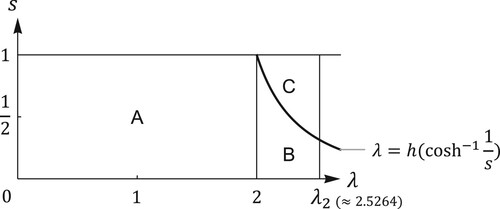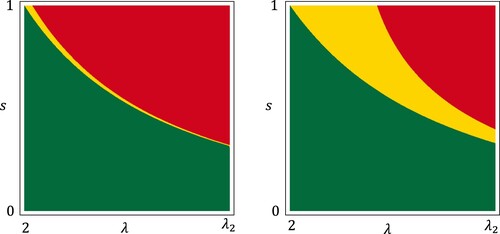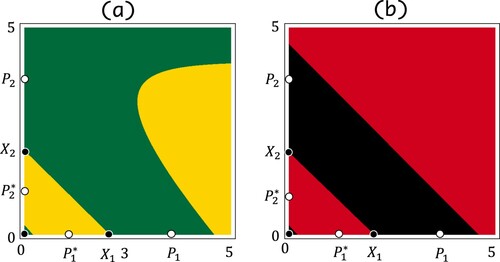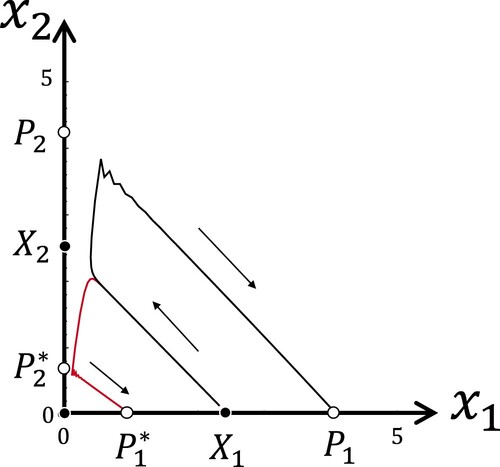Figures & data
Figure 1. The phase plane of system (Equation1
(1)
(1) ). The set
is a proper subset of
. Species 1 is dominated by species 2. The unstable manifold of
and the stable manifold of
have nonempty intersections with the interior of
.

Table 1. Stability of the boundary fixed points and the boundary 2-cycles of system (Equation1(1)
(1) ).
Figure 2. The parameter plane of system (Equation1
(1)
(1) ) with
. In regions A, B, and C,
,
, and
are asymptotically stable, respectively. There are no stable fixed points nor stable 2-cycles on the boundary of
if
.

Figure 3. The parameter plane of system (Equation1
(1)
(1) ). The green and red regions correspond to the region B and C in Figure , respectively. In the yellow region, both
and
have unstable transversal eigenvalues, i.e. both species can mutually invade at the boundary 2-cycles. On the left and right panels,
and
, respectively.

Figure 4. The basins of attraction of the boundary 2-cycles of system (Equation1(1)
(1) ). The vertical and horizontal axes are
and
, respectively. (a) The points in the green and yellow regions are attracted by
and
, respectively, under the second iterate of system (Equation1
(1)
(1) ). The parameters are
, s = 0.6, and
. (b) The points in the black and red regions are attracted by
and
, respectively, under the second iterate of system (Equation1
(1)
(1) ). The parameters are
, s = 0.1, and
.

Figure 5. A single forward orbit of system (Equation1(1)
(1) ). The points of the orbit are connected with black and red lines if they are points of
th and 2n + 1th iteration, respectively. The parameters are the same as in Figure (a).

